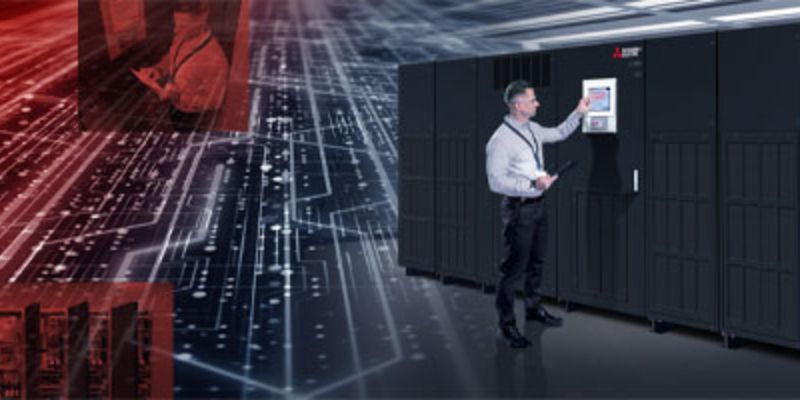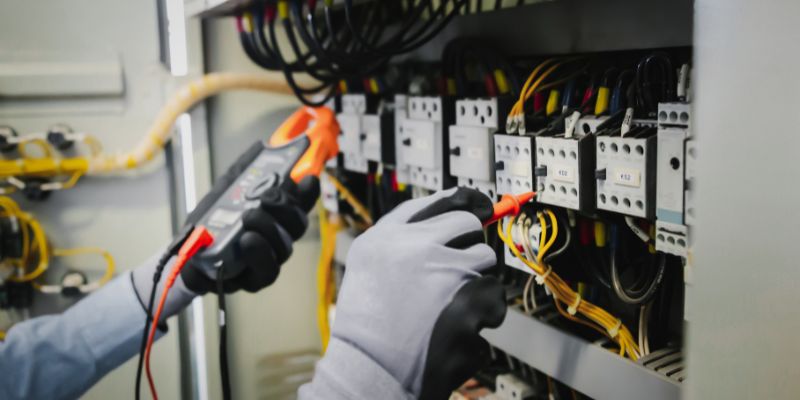It is crucial for modern power systems to ensure a stable and reliable electrical supply in many businesses, particularly critical applications such as in hospitals and data centers. One technology that plays a pivotal role in achieving this goal is the bypass isolation transformer, which provides many benefits as an important piece of equipment in critical power systems. Isolation transformers provide increased uptime and enhanced safety measures and can significantly impact the efficiency and reliability of electrical infrastructures.
Bypass Isolation Transformers and UPS Systems
Most uninterruptible power supply (UPS) systems today do not include an internal transformer which was common in earlier models. The evolution to not include transformers with UPS systems decreased the size and weight of these systems while increasing efficiency.
Newer, transformerless UPS systems allow for transformers to be optional and to be placed in the optimum location to achieve the best-desired outcome.
In older UPS designs, transformers were usually installed in a permanent position where they did not actually provide the benefit desired. This is because they were not optimally located, which actually reduced system efficiency.
Many applications require that a transformer be installed either internally to the UPS or added externally. Some older UPS systems with internal transformers may still require additional external transformers in some cases.
In almost all cases where a transformer is necessary, the transformerless UPS design provided superior results as it allows for the installation of the bypass isolation transformer in the most optimal location of the power path. This improves power system design and performance for critical applications like data centers and hospitals.
Why Transformers in UPS Systems Are Not Always Ideal
The belief in years past was that internal transformers in UPS systems provided galvanic isolation between the UPS input and output, which we now know is not accurate. The main reason that transformers were included in traditional UPS systems was that they were required due to the power inverter technology of UPS equipment.
The very first UPS systems were developed more than 40 years ago and utilized a ground-referenced battery system. The battery configuration and grounded electronics required these older UPS systems to have two transformers for isolation from the mains – one on the input rectifier and one on the output inverter. Improvements in later designs moved the battery bus to be electrically floated or to a neutral wire which allowed for the elimination of the rectifier transformer. Most newer UPS systems eliminate both the input and output transformer by taking advantage of high-voltage, high-speed power semiconductors that were not available 15-20 years ago.
While some processes do not require the use of a transformer, many applications and situations call for the installation of a transformer to be used in combination with UPS equipment.
UPS System Configurations
UPS system configurations basically fall into three different categories, which are differentiated by the presence and connection of a static bypass. The three categories are typically referred to as:
- Single mains
- Dual mains
- Single mains without bypass
Single Mains Configuration
The mains connection supplies both the UPS module and the bypass in the single mains configuration, as both are connected at the UPS. This is the most typical configuration and is the only option available in many smaller UPS systems. This single mains configuration can be found in many data center installations and provides the benefit of low cost and simple installation and eliminates complex configurations with grounding and circulating currents.
One of the main disadvantages of this type of configuration is that the mains cannot be shut down for maintenance without disrupting critical low power, although wraparound breakers on the mains can overcome this issue.
Dual Mains Configuration
When there is a second mains separate from the mains that is feeding the UPS rectifier input, a dual mains configuration is required. There can be minor to major differences in the mains ranging from different breakers on the panel to completely independent sources with different voltages and ground systems. There are various redundancy architectures in data centers that call for this type of configuration. Another cause for dual mains configuration would be to allow either of the two mains to be down for maintenance while the other is still providing critical load.
The dual mains configuration is not required when a generator is used but can be helpful when the generator is connected to the mains bus upstream of the UPS with an automatic transfer switch (ATS) to allow the delivery of power to other loads in addition to the UPS. Some data center architectures and many large data centers prefer it to prevent the wiring and breaker upstream of the UPS from causing a single failure point for the entire power system, thus improving system reliability.
Single Mains Without Bypass Configuration
This type of configuration is used in environments where the quality of the mains power is so poor that it is not desired to power critical load through a bypass. These situations include some industrial environments, small islands, for example, or even shipboards where the mains frequency is not the same as the IT load frequency. This can also occur in stressed electrical grids in developing countries. Single mains without bypass configuration is uncommon in countries like the United States but is common in other developing countries such as India and can even be the majority of installations in other underdeveloped regions.
These three configurations may include one or more transformers in the power path.
Why Use an Isolation Transformer
An isolation transformer increases the safety of equipment and users by providing isolation between the power source and the powered devices. Isolation transformers reduce power surges and noise (not audible noise but electrical noise that occurs when random electrical signals get coupled into circuits which can degrade the quality of the power). This makes isolation transformers ideal for equipment that requires high-quality supply of power for efficient and reliable operation.
Some of the most important reasons for using an isolation transformer include:
Safeguarding Critical Equipment: The installation of a bypass isolation transformer acts as a protective shield for sensitive and critical equipment. This transformer serves as a physical barrier, isolating the connected load from disturbances and voltage fluctuations in the utility power supply. This isolation ensures that power fluctuations, harmonics, and electrical noise do not reach the equipment, minimizing the risk of damage and improving its longevity.
Enhanced Power Quality: Isolation transformers play a vital role in maintaining a high-quality power supply. They effectively isolate the connected load from the utility’s power issues, such as voltage sags, surges, spikes, and electrical noise. By offering a clean and stable power output, bypass isolation transformers help mitigate the risk of data corruption, equipment malfunction, and operational disruptions.
Increased Uptime and Availability: Unplanned downtime can be catastrophic for businesses, leading to financial losses and reputational damage. Bypass isolation transformers contribute significantly to improving the uptime and availability of critical systems. These transformers offer a bypass mechanism that allows for seamless switching between utility power and backup power sources, such as UPS systems or generators, without interrupting the power supply to the connected load. This feature ensures continuous power delivery and uninterrupted operations, even during maintenance or power source failures.
Flexibility and Scalability: Power systems often require scalability and flexibility to accommodate changing business needs. Bypass isolation transformers provide a practical solution for such requirements. These transformers can be customized to match specific power ratings and are compatible with a wide range of applications and equipment. This versatility allows businesses to expand their infrastructure without worrying about compatibility issues, making bypass isolation transformers a cost-effective and future-proof investment.
Enhanced Safety Measures: Safety is a top priority in any power system. Bypass isolation transformers offer significant safety advantages. The isolation of the connected load from the utility power supply ensures that potential electrical faults, short circuits, or other disturbances do not propagate back into the utility’s electrical grid. This isolation protects not only the connected equipment but also the utility’s infrastructure, reducing the risk of electrical accidents, fire hazards, and damage to other systems within the network.
Bypass isolation transformers and power systems offer numerous benefits that significantly contribute to the stability, reliability, and safety of critical equipment and operations. From safeguarding sensitive equipment to enhancing power quality, increasing uptime, and providing scalability, bypass isolation transformers play a vital role in modern power infrastructures.
Santa Fe Power Solutions is a trusted industry leader when it comes to critical power solutions. We provide tailored power solutions to meet the unique requirements of a wide range of industries. Our critical power specialists assist businesses in implementing bypass isolation transformers to optimize the efficiency, reliability, and safety of their electrical infrastructure. Contact us to speak with a critical power specialist and learn more about our critical power equipment and turnkey services.





